Digging has been progressing well here at Lyminge, with some of our hunches being proved through excavation, and others turning out to be quite different although still just as fascinating.
As you can see the trench is filled with volunteers and students. Postholes, SFBs and wall trenches are being carefully excavated and recorded. The paperwork generated seems overwelming at times as every last archaeological context is carefully described, drawn and photographed, but Rosie and Ben go through it carefully to make sure there are no errors and everyone’s training is up to scratch!
It’s very imporant that the records are as accurate as possible because once we have dug into a feature and examined the finds, we can’t put it back, and we need as much detail as possible to be able to reconstruct and write about the archaeology when we come to publish in the future.
The paper, photographic and drawn records form a detailed archive of everything we’ve dug here in Lyminge and can be referred to over and over in discussing and interpreting the archaeology.
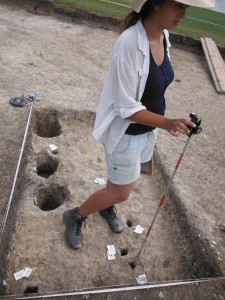
Nicola takes levels (heights above sea level) for the tiny stake holes she discovered in the South East quadrant of SFB 7
Some very interesting features have come up over the past few days. The first sunken-featured building (SFB 7) that we began to excavated has been fully exavated in two quadrants, and is currently being meticulously recorded. Rosie E. and Nicola discovered very small stake holes in both their quadrants, which almost might have been missed but for us re-cleaning each quadrant carefully to make sure we hadn’t missed anything cut into the base of our SFB pit.
These stake holes may have been part of the internal structure of the building – whether they supported a raised floor or formed part of the support for a piece of furniture like a loom is a subject of great academic debate and our SFB adds to the interesting discussion!
The stake holes in Nicola’s quadrant aren’t the only interesting feature – we would usually expect one large post to support the roof at either end of the SFB, but you can see from the photo above (click to enlarge it) that behind Nicola there are three large post holes. It seems that extra support was required during the building’s lifetime – perhaps the roof started to sag?
SFB 6, the second sunken-featured building that we opened, is very different in character. It has been fully excavated in one quadrant, and you can see that we have a large pit cut into the bottom of it on one side, and potentially beam slots and a post hole on the other. The pit within the SFB pit itself is rather unusual. It was filled with very large pieces of quern stone, something we haven’t found in great quantities on Tayne Field before, but we

The south east quadrant in SFB 6 has a large pit cut into it, with several other features that could be beam slots and post holes.
have found plenty from the later monastic phase of the Anglo-Saxon settlement in our digs behind the church. We’re hopeful that taking down the other two quadrants will help to resolve this unusual pit placement. What’s particularly interesting about our two sunken-featured buildings is that Rose Broadley, our glass expert, has examined the glass and is able to say from preliminary analysis in the field that SFB 7 is 6th century in date, with SFB 6’s glass dating to the 7th century AD.

Zoe and her team on SFB 6 attempt to beat the sun and take a photograph of the fully excavated quadrant
A further area of interest is a very large pit-like feature that appeared after we finished excavating the clinker foundations of the WWII structures. This is a particulary interesting feature because it contains a very large amount of iron smelting slag, with huge pieces in the top of it. You can see the size of the flint nodules too (right). The density of flint is extremely unusual. Initial thoughts were that this might be a collapsed smelting furnace, but the quantity of unburnt flint and unfired daub is perhaps suggestive of more of a large rubbish pit which has been used as a dump for the remains of a furnace. However, yesterday we began to uncover what looked like post holes within the ‘pit’ so there may yet be a structure associated with this unusual feature. We’ll find out more as we go down, you can see that we have a little way to go yet!
It’s not just the digging, of course! This week we are joined by David Thornley, who you may remember from one of the first blog posts that I wrote last year, when Dave and I did geophysics (using resistivity) on Tayne Field. The wetness of the soil (remember last year’s rain?!) unfortunately meant that we didn’t pick up anything useful using resistivity, but this year Dave is back to try out Ground Penetrating Radar (GPR) in the churchyard and inside the church in order to confirm Canon Jenkins’ 19th century excavation plans, and to see if we can pick anything else up in this area. Sean and Simon are helping Dave this time, learning how to use the equipment, and particularly because it is at least a two man job !
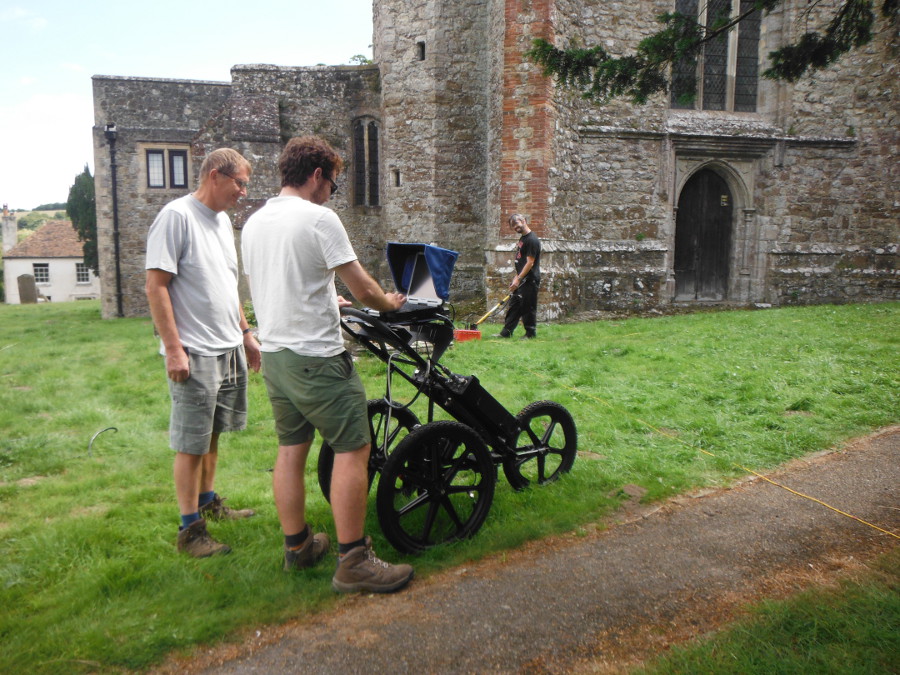
(l-r) Dave Thornley, Sean Doherty and Simon Maslin use Ground Penetrating Radar in the churchyard of Lyminge parish church
GPR uses radar to reach up to 3m underground and builds up a 3D picture of whatever is underneath the ground surface. As you can see it requires some very bulky but clever equipment! The data has yet to be processed so we’ll keep you posted on any developments.

Excavation of the two hall buildings is underway. Here you can see slots placed over wall trenches and post holes along the footprints of the two timber halls
Work proceeds on the wall trenches of the two timber hall structures. They are proving very complicated to disentangle but we are making progress! Some areas have to be continuously wetted down and covered with tarpauline in order to keep the ground moist enough to see the features and be able to dig it! After a sunny day the ground bakes solid and it is extremely difficult to dig. In the photo on the left a complicated area has been watered and covered so we can give it a closer look later on.
Some of the post holes are shallow but contain a wealth of information. You can see here below the beautifully preserved daub in the post holes for the larger building, and some of the daub extracted has preserved wattle impressions and a whitewashed surface.

A cross-section through one of the post holes in the southern-end wall of the larger timber hall. You can see orange fired daub, suggestive of fire, and whiter unfired daub.
The larger timber hall appears to have been cut by the slightly narrower and smaller hall, perhaps a later replacement, but this may change as we open more slots over intercutting areas. Interpretations change and progress on a daily basis!
Perhaps one of the most exciting developments is the discovery of an extremely large post pit in the extension trench. We originally opened this area to establish if the World War II structures had disturbed any Anglo-Saxon archaeology. We found a line of late Medieval post holes and an enormous WWII rubbish pit full of rubbish from the demolition of the mess huts after the war ended, as well as the continuation of the Medieval ditch that crosses the whole site. In giving this area a good hard trowel over and in investigating a couple of what appeared to be smaller Saxon features, we began to see that there were one or two significant Anglo-Saxon features. One of these was given a closer look, and it was discovered that what we had thought was perhaps a smallish post hole or pit, was in fact an absolutely enormous post pit, larger than the post pits for the doorways of the Great Hall that we discovered last year!
This is an astonishing discovery, suggesting that a structure perhaps equalling in size last year’s Great Hall exists in the area towards Church road, on the highest part of the plateau on Tayne Field.
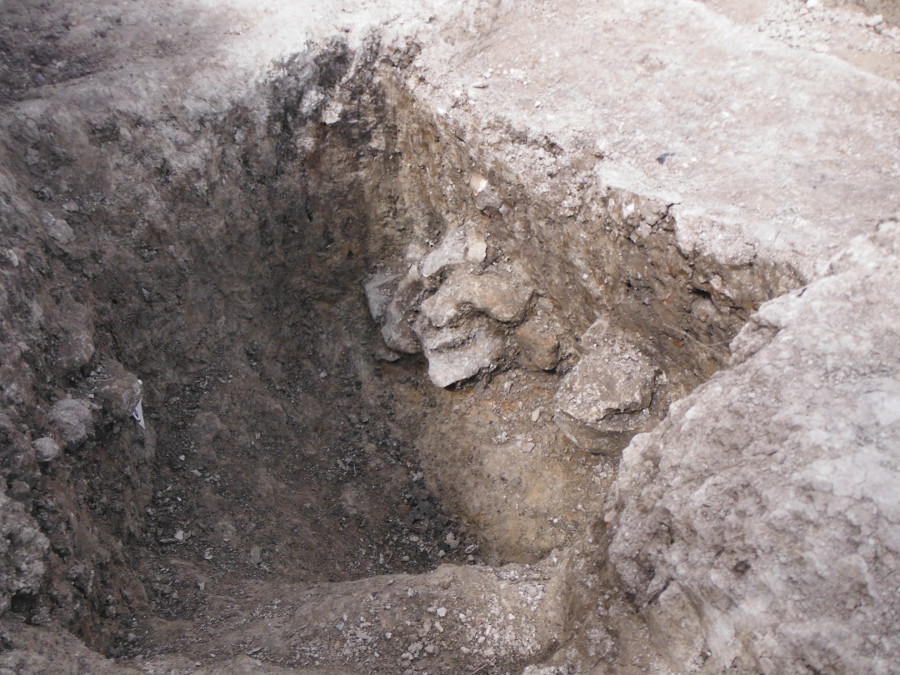
The substantial post-pit half-sectioned, with the flint packing for a very large post clearly visible
We have only revealed a very small area over this pit and wall trench, so it may seem rather speculative to talk of further halls of this size, but having a good understanding of last year’s archaeology means that we are in a good position to extrapolate a large structure from the post pit we have so far uncovered. This area will certainly be investigated in future digs, and it certainly once again changes our understanding of the Pre-Monastic settlement in Lyminge.
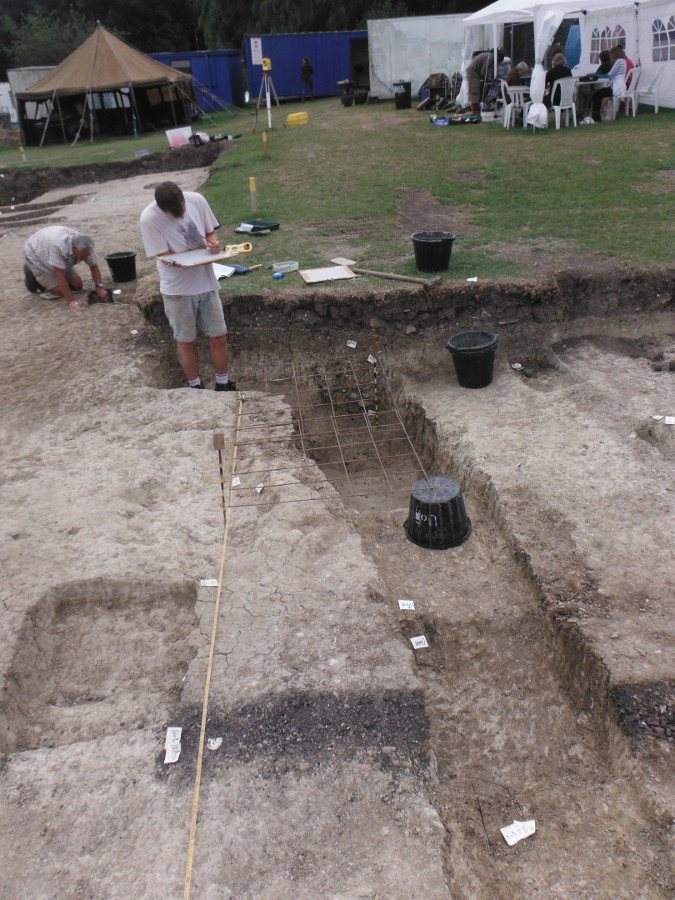
Jack plans the post pit and wall trench for the potentially extremely substantial building on the plateau of Tayne Field
With that in mind, don’t forget about our Open Day this Saturday 17th August, 10-4.30pm. Dr Gabor Thomas our site director, with support from myself, will be taking site tours at 11am, 1pm and 3pm so you can see the archaeological evidence for yourselves! Hope to see you there!

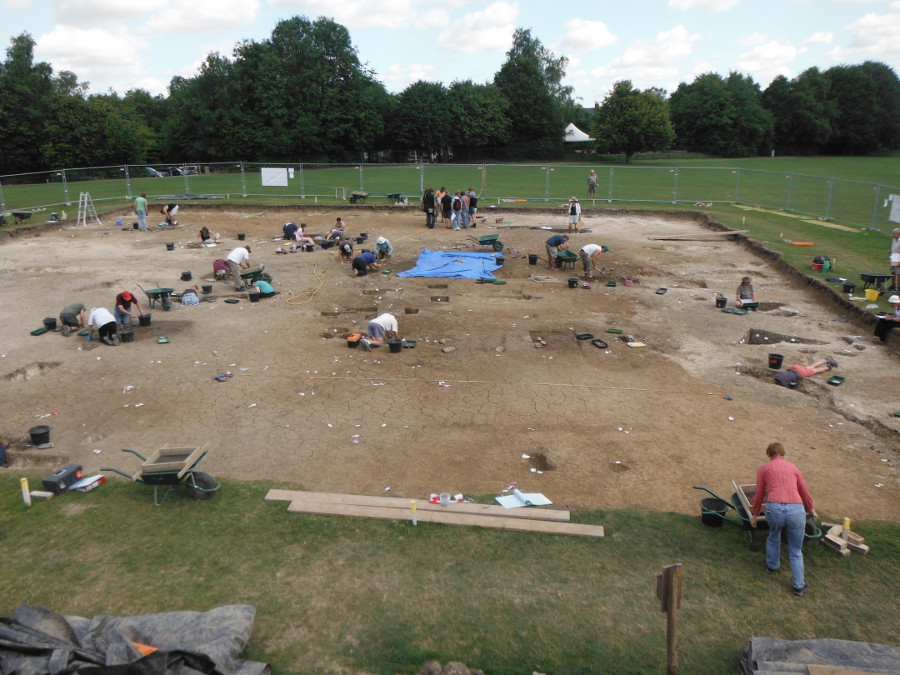




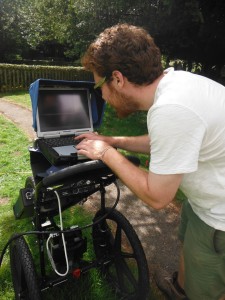

Can’t wait!